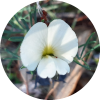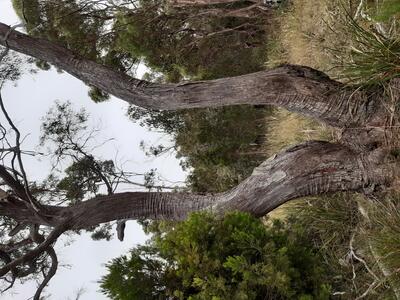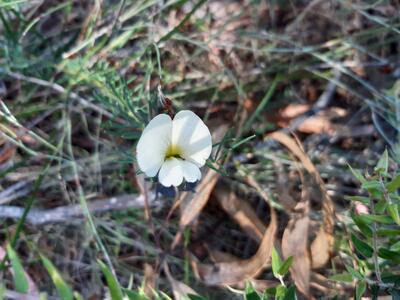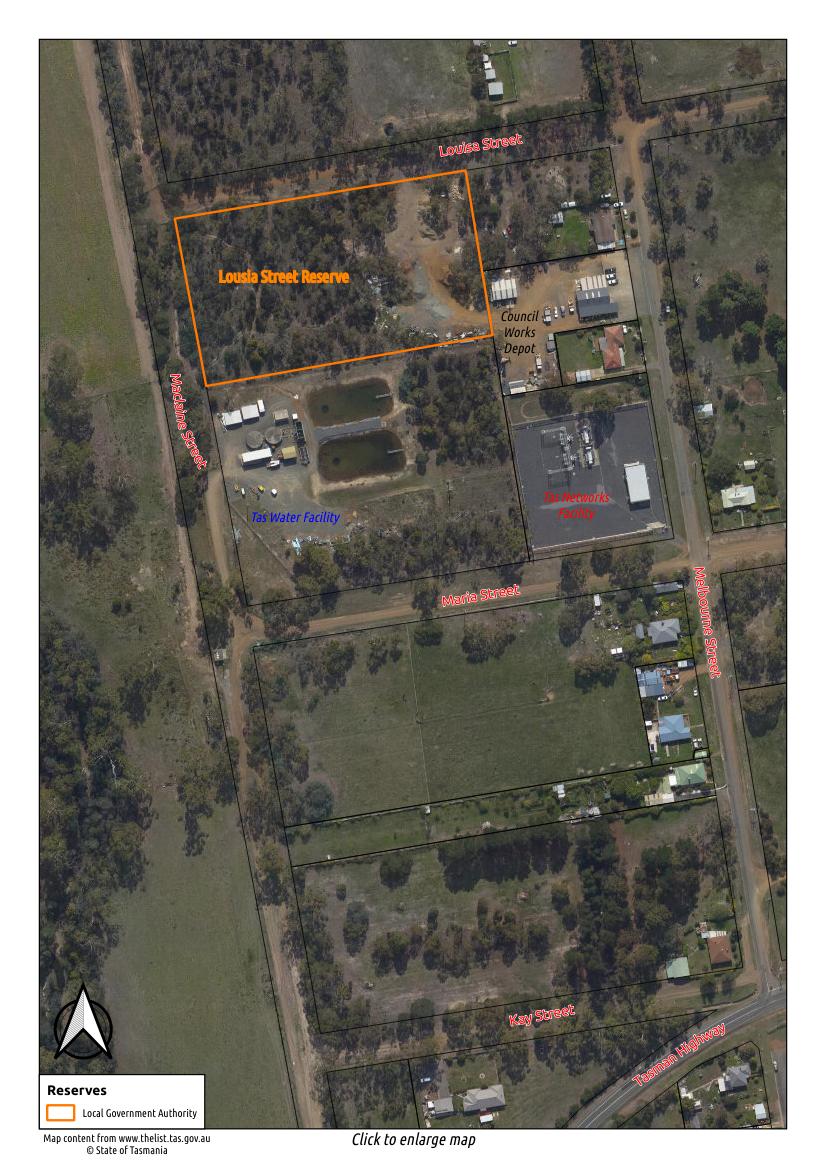Louisa Street Reserve
A small pocket of bushland has survived behind the Council Works Depot in Louisa Street. Tucked out of the way on the north western edge of Triabunna, it still has a healthy growth of native vegetation. Few weeds have crept in and it is relatively free of rubbish dumping. However it has been under the constant threat of being encroached on by the Council depot activities. Protective fencing has recently been installed along this boundary by the Council following representation from the Friends of Triabunna Reserves.
This reserve is bordered by country lane type tracks and a pleasant rural atmosphere of peace and isolation can be experienced here. Small native birds are prevalent and their birdsong can be heard throughout the undergrowth. Rudimentary walking tracks, some made by vehicles invading this land before their access was blocked, lead you into a forest type world despite the industrial type surrounds nearby (the TasWater Depot is located on its southern boundary). Native cherry trees have found a foothold in this Reserve creating a secluded and special habitat where they are thriving. It is also the home of some healthy specimens of the rarer eucalypt species in this area, the Black Gum (Eucalyptus ovata var. ovata).
There is an easy, flat and straight track along the Woodstock boundary on the western side. Woodstock is one of the earliest farms that was established on the East Coast. Wearing boots whilst visiting this Reserve is especially recommended as copperheads and tiger snakes have been seen here. It can also become very soggy at times of heavy rainfall when the chorus of frogs fills the air.
Visiting during the springtime reveals a host of heath like flowers that come to life across this bushland. It is a special remnant of forest and natural bush within the town boundaries that is well worth nurturing and preserving. However, some early stages of change from encroachment by non-native species is apparent. Pasture grasses from the adjacent paddocks are establishing themselves where the ground has been disturbed, in competition with the presently abundant native grasses. The impact of vehicles and waste dumping over the years can be seen along the rutted tracks where introduced species such as Spanish Heath have sprouted.
The Friends of Triabunna Reserves would like to see a couple of gravel paths developed in this Reserve, along with some unobtrusive but informative signs about the native vegetation present. We would like people to stay on these paths to avoid introducing unwanted species. Boundary fencing and appropriate signage would also help encourage respect for this Reserve and discourage rubbish dumping and vehicles from entering.
Photos by Rob Kelly




